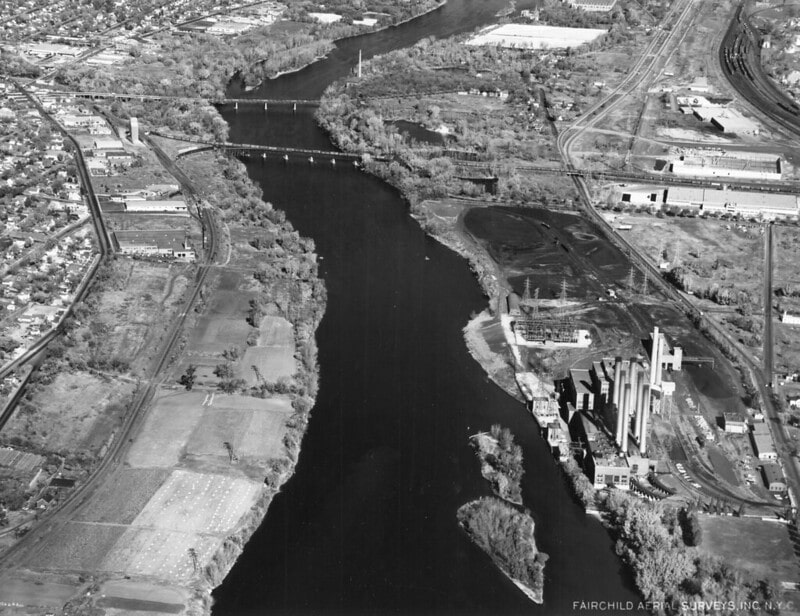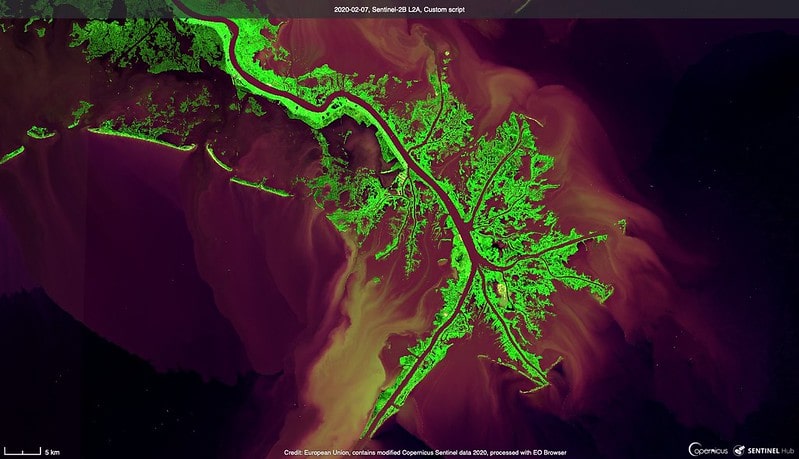Last updated on June 23rd, 2022
In addition to having a name that is the toast of would-be spelling champions and tongue-twister aficionados everywhere, is a culturally significant landmark with a rich history and the home to many interesting facts. Rivers are considered large on the basis of one or more of three characteristics: total length from source to mouth, area of basin (watershed) drained by the stream, and average rate of flow (discharge) at the mouth.
River lengths or river-length data are affected not only by some of the natural and artificial causes noted in the preceding paragraph, but also by the precision of various techniques of measurement, by the scale of available maps or aerial photographs, and by somewhat arbitrary decisions.
We take a closer look at 50 interesting facts about Mississippi River.
1. The Mississippi River has a total length of 2,340 miles long.
2. At its current length, the Mississippi River is the second-longest river on the North American content. The Missouri River, a tributary of the Mississippi River, is about 100 miles longer.
3. In addition to being the second-largest river on the North American continent, the Mississippi River is also the principal river within North America’s second-largest drainage system on North American continent.
4. Did you know that the names of some rivers, such as the Mississippi River and the Rio Grande, are unchanged from source to mouth?
5. The Mississippi River is not only important to North America, but is also important to the entire world. Worldwide, the Mississippi River is the fourth largest watershed or drainage basin in length when the Missouri-Jefferson (Red Rock system) in included in the addition.

6. Importantly, on its own, the Mississippi is exceeded in length by a total of 19 other rivers.
7. In volume of discharge, the Mississippi’s rate of roughly 600,000 cubic feet (17,000 cubic metres) per second is the largest in North America and the eighth greatest in the world. The biggest river by discharge volume is the Amazon at an impressive 209,000 cubic meters (7,380,765 cubic feet) per second.
8. Currently, the river and its tributaries drain a total of 31 U.S. States (some totally and others in part) and two Canadian provinces. In total, this measures an approximate area of 1.2 million square miles (3.1 million square kilometers) or one-eighth of the entire North American continent.
9. The Great River Road is a scenic roadway that runs along most of the course of the river. It was created in 1938.

10. The Mississippi River’s Great River Road runs through approximately 110 parishes and counties and is one of the world’s busiest waterways.
11. As one of the world’s busiest commercial waterways, Mississippi has been subjected to much human modification and control. The lower Mississippi, for example, has been curbed by a combination of levees, dams, and spillways.
12. Scientists have calculated that it takes a total of the 90 days for a drop of water to travel the entire length of the river.
13. The Mississippi River drops a whopping 1,475 feet measuring from its source in the north of Minnesota all the way to the Gulf of Mexico.
14. Unsurprisingly, a river as large and historic as the Mississippi River, is home to a large ecosystem of fish, birds, amphibians, and mammals. At the last available data, there is a total of 50 species of mammals, 360 species of fish, 145 species of amphibians, and 326 species of birds.
15. Of the many species of fish found in the Mississippi River, some of the most popular (or even important) varieties include garfish, walleyes, suckers, catfish, sturgeon, pike, and carp.
16. Approximately 25% of all North American species of fish call the Mississippi home. About half of that 25% live below the only major waterfall along the river.
17. The St. Anthony Falls was the only major waterfall along the length of the Mississippi.
18. More than being a fish habitat, St. Anthony Falls played a significant role in Minneapolis’ industrialization. This is due largely to settlers in the 1700s and 1800s using the falls as a source to generate power for flour mills and lumber mills. Thereafter, the Mississippi, and particularly St. Anthony Falls, became known as the home of flour and saw milling.
19. Algiers Point in New Orleans marks the deepest point on the Mississippi River. This deepest point measures approximately 200-deep.

20. The Upper Mississippi River was explored in 1805 by Zebulon Pike after whom the 500-foot Pike’s Peak in Iowa was named after.
21. The source of the Mississippi River is Lake Itasca and the mouth is located in the Gulf of Mexico, and in total flows through 10 U.S. States.
22. The ten U.S. States that the Mississippi River flows through include Kentucky, Tennessee, Mississippi, Arkansas, Illinois, Iowa, Wisconsin, Louisiana, Minnesota, and Missouri.
23. Of the ten states that the river flows through, two of those states have cities located along the course of the river.
24. Among the cities that the Mississippi River spans are New Orleans, Memphis, St. Louis, Minneapolis, Baton Rouge, La Crosse, and Saint Paul.
25. Two major tributaries of the Mississippi River include the Ohio River (located to the east of the Mississippi) and the Missouri River (to the west).
26. Other important Mississippi tributaries hail from Illinois, Iowa, and Wisconsin.

27. The river’s widest point measures 11 miles across. This is near where the river forms Lake Winnibigoshish
28. Lake Winnibigoshish is where water skiing was invented by then 18 years old Ralph Samuelson who is credited with being the first person to transfer the activity of snow skiing to water skiing.
29. As far as the shipping channel component of the river is concerned, the widest point is located at Lake Pepin and measures approximately two miles across.
30. Measuring about 1.5 miles (or 2.4 km) from bank to bank, the lower section of the Mississippi is brown in color and is described as ‘lazy’ as it deceptively descends quietly to the Gulf of Mexico.
31. The name Mississippi was derived from the Algonquian speaking Indians who dubbed it the ‘big’ (misi) ‘water’ (sipi). The river was also referred to as the ‘Father of Waters.’
32. The entire length of the Mississippi river has been swum twice, first in 2002 and then in 2015.
33. In 2002, Martin Strel (a Slovenian distance swimmer) became the first person to swim the length of the Mississippi. He did so in only 66 days (which is faster than the 90 days it takes a drop of water to travel the full length of the river)
34. In 2015, Chris Ring became the second person to swim the length of the Mississippi. Chris Ring was a navy combat veteran and the first American to complete the distance. The feat took him a total of 181 days.
35. Due largely to the many man-made control mechanisms and interferences to the river’s course, different sections of the Mississippi flows at different speeds.
. . . continue reading on the next page
